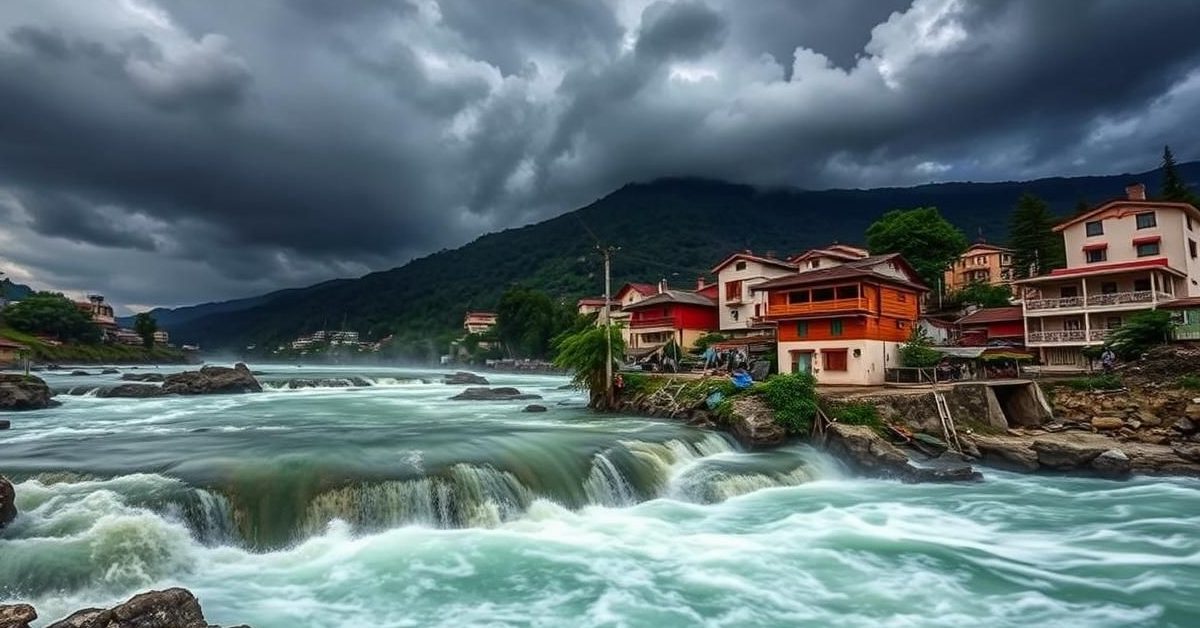Understanding Geographical Indication (GI) Tags
The world of fashion and intellectual property recently saw a fascinating intersection when **Prada**, the renowned Italian luxury house, unveiled its men’s spring-summer collection for 2026. Models strutted down runways sporting leather slippers that bore a striking resemblance to **Kolhapuri chappals**, the iconic open-toe, T-strap sandals cherished across India for centuries. This incident brought into sharp focus the critical role of **Geographical Indication (GI)** tags.
The Essence of GI Tags and Cultural Heritage
A **GI tag** is far more than a mere label; it’s an official certification confirming that a product originates from a specific geographic region, possessing unique qualities or a reputation inherently linked to that origin. For products like the **Kolhapuri chappal**, which proudly carries this designation, it signifies deep cultural roots and traditional craftsmanship.
Crucially, **GI tags** serve as powerful tools for preserving invaluable traditional knowledge, safeguarding cultural heritage, and ensuring the continued livelihoods of the local artisans and practitioners who have honed these skills over generations. They protect against imitation, upholding the authenticity that consumers seek.
Key Principles of Geographical Indication
To be awarded a **GI tag**, a product must meet stringent criteria. Its quality, reputation, or distinct characteristics must be fundamentally attributable to its place of origin. Furthermore, the application must meticulously detail the production methods, materials used, and quality benchmarks. Only registered, authorized entities—such as producer groups or cooperative societies—are legally permitted to use the GI.
Unlike trademarks, however, **GI tags** are inherently **non-transferable** and **cannot be licensed**. This fundamental difference underscores their purpose: to protect collective regional heritage, not individual brand ownership. Moreover, a GI must never become a generic name for a product; it must always retain its distinct association with its geographical source. Owners and governments are legally obligated to vigilantly monitor for misuse and take swift action against counterfeiting or false labeling.
Boosting Farmers’ Income with Tripura’s Queen Pineapple
In a significant move to elevate the economic standing of its agricultural community, **Tripura** has unveiled an ambitious project aimed at substantially increasing farmer incomes through the expanded cultivation of the exquisite **Queen Pineapple**. State Agriculture Minister **Ratan Lal Nath** announced this **₹132 crore** initiative, designed to harness the unique value of this distinctive fruit.
The Distinctive Queen Pineapple: A GI-Tagged Treasure
The **Queen Pineapple** holds a coveted **Geographical Indication (GI)** designation, affirming its exceptional quality and unique characteristics directly attributable to its cultivation in **Tripura**. This certification is vital, enhancing the pineapple’s branding and amplifying its export potential on a global scale. Recognized for its sweet taste and distinct aroma, the **Queen Pineapple** was also officially declared the state fruit of **Tripura** in 2018, further cementing its significance.
This strategic project aims not only to boost production volumes but also to empower local farmers by connecting them to broader markets, ensuring their efforts translate into sustainable economic growth.
Revolutionizing Health: Semaglutide and Tirzepatide Explained
Recent years have witnessed a groundbreaking shift in the medical treatment of **type-2 diabetes** and **obesity**, largely propelled by a new class of pharmaceuticals. **Novo Nordisk**, a leading Danish pharmaceutical giant, recently introduced its highly anticipated weight-loss injectable, **semaglutide**, to the Indian market. This follows months after its competitor, **Eli Lilly**, launched its own significant compound, **tirzepatide**, in India, marking the widespread availability of these transformative **GLP-1 medicines** that have already reshaped treatment paradigms in the United States over the past four years.
Understanding GLP-1 Receptor Agonists
Both **semaglutide** and **tirzepatide** belong to a category known as **GLP-1 (glucagon-like peptide-1) receptor agonists**. These medications are often referred to as “incretin mimickers” because they ingeniously replicate the action of naturally occurring gut hormones called incretins, with **GLP-1** being a prominent example. By mimicking these hormones, the drugs help regulate blood sugar levels, reduce appetite, and promote a feeling of fullness, leading to significant benefits for individuals managing **type 2 diabetes** and struggling with **obesity**. Their advent marks a crucial advancement in addressing these widespread health challenges.
The Precision Art of Space Docking
The recent successful **docking** of the **SpaceX Dragon spacecraft** with the **International Space Station (ISS)**, carrying Indian astronaut **Shubhanshu Shukhla** and three fellow crew members, once again highlighted one of the most intricate and critical maneuvers in spaceflight. While now a relatively routine procedure—the **ISS** experiences approximately a dozen **space dockings** annually—it remains an extraordinary feat demanding unparalleled control and precision.
What is Space Docking?
**Docking** describes the complex process by which two spacecraft, despite hurtling through space at immensely high speeds, perfectly align in a precise orbit and then physically connect. This capability is absolutely fundamental for constructing and expanding structures in orbit, such as the **ISS**, where various modules must be joined to form a unified, functional space station. It’s a testament to human ingenuity and engineering prowess, enabling sustained human presence and scientific exploration beyond Earth.
Transforming Jammu and Kashmir: Key Infrastructure Projects
In a monumental stride towards bolstering development and connectivity in **Jammu and Kashmir**, the Central government recently greenlit 19 major road and tunnel projects, collectively valued at an astonishing **₹10,637 crore**. This infrastructure push is poised to significantly enhance accessibility and strategic pathways across the region. Among these, four projects stand out due to their high value and critical strategic importance.
Strategic Connectivity Enhancements
The approved high-impact initiatives include the construction of a crucial tunnel at **Pir ki Gali** along the vital **Srinagar-Shopian-Bafliaz-Jammu** road. Another significant undertaking is the **Sadhna tunnel** on the **Kupwara-Karnah** road, promising improved year-round connectivity. Additionally, the plan encompasses a **28-kilometer road stretch** from **Zaznar to Shopian** in South Kashmir, and the comprehensive resurfacing of the **68-kilometer Trehgam-Chamkote road**. These projects are set to not only improve daily life for residents but also fortify the region’s strategic infrastructure.
Banakacherla Reservoir Plan: A Lifeline for Andhra Pradesh
A contentious but crucial water infrastructure project, the **Banakacherla reservoir plan**, has recently been at the center of political debate between **Andhra Pradesh** and **Telangana**. Telangana Chief Minister **A Revanth Reddy** notably challenged former state CM and **Bharat Rashtra Samithi (BRS)** leader **K Chandrashekar Rao** to a legislative assembly debate over the project, highlighting its significant implications for regional water security.
Harnessing Godavari Waters for Rayalaseema
At its core, the **Banakacherla reservoir project** is designed with a transformative vision: to convert the arid, drought-prone **Rayalaseema region** of **Andhra Pradesh** into fertile agricultural land. This ambitious plan hinges on a multi-phase approach to bring much-needed water to the area.
The initial phase involves dramatically increasing the capacity of the **Polavaram Right Main Canal** from 17,500 to 38,000 cusecs, thereby facilitating the transfer of **Godavari River** water to the **Krishna River** basin. Following this, the **Thatipudi Lift Irrigation Scheme’s** canal capacity will be boosted from 1,400 to 10,000 cusecs.
The project further outlines the construction of a new reservoir at **Bollapalli** in **Guntur district**, from which water will be lifted at a rate of 28,000 cusecs and directed towards the **Banakacherla reservoir**. Multiple lift stations, situated in areas like **Harischandrapuram**, **Lingapuram**, **Vyyandana**, **Gangireddypalem**, and **Nakirekallu**, will be integral to pumping water into the Bollapalli reservoir. Ultimately, the water will traverse a tunnel through the **Nallamala forest** to reach the **Veligonda** and **Banakacherla reservoirs**, promising a new era of agricultural prosperity for Rayalaseema.
Remembering the Emergency of 1975: A Dark Chapter in India’s History
Fifty years ago, on **June 25, 1975**, India plunged into one of the darkest and most contentious periods of its post-independence history: **The Emergency**. This 21-month span, lasting until **March 21, 1977**, saw the **Indira Gandhi** administration invoke extraordinary constitutional clauses, leading to profound and often draconian impacts across the nation. It was a time marked by widespread suspension of civil liberties, severe curtailment of press freedom, mass arrests, and governance by decree, casting a long shadow on the democratic fabric of India.
Key Decisions and Consequences During the Emergency
During this tumultuous period, several pivotal and controversial decisions were enacted:
* **Centralization of Power:** India’s federal structure underwent a de facto transformation into a unitary system. While state governments were not formally suspended, their autonomy was significantly eroded, effectively bringing them under the complete control of the Centre. Parliament gained the power to legislate on subjects typically reserved for the State List, and the President, with parliamentary sanction, amended constitutional provisions concerning the allocation of financial resources between the Union and states.
* **Mass Detention of Opposition Leaders:** Nearly all prominent opposition leaders, including figures like **Jayaprakash Narayan (JP)**, were immediately incarcerated. An staggering estimated **1.12 lakh people** were detained under highly restrictive and often arbitrary laws, such as the **Maintenance of Internal Security Act (MISA)**, the **Conservation of Foreign Exchange and Prevention of Smuggling Activities Act (COFEPOSA)**, and the **Defence of India Act and Rules (DISIR)**.
* **Erosion of Fundamental Rights and Press Freedom:** Fundamental rights, including the critical **freedom of speech and expression guaranteed under Article 19(1)(a)** of the Constitution, were severely curtailed. Newspapers faced stringent **pre-censorship**, effectively silencing dissent and controlling the flow of information to the public. These measures collectively underscore the profound impact the Emergency had on the democratic norms and civil liberties in India.
The International Atomic Energy Agency (IAEA): A Global Watchdog
Recent reports detailing attacks on **Iran’s nuclear sites** have cast a spotlight on the crucial role of the **International Atomic Energy Agency (IAEA)**, the world’s leading nuclear watchdog. While both Iran and the IAEA have, thankfully, reported no immediate increase in radiation levels at the targeted facilities—**Natanz**, **Isfahan**, and **Fordow**—concerns persist regarding the safety and precise whereabouts of nuclear material stored within these sites. These incidents mark an unprecedented moment, as it is the first time any nation’s operational nuclear facilities have been explicitly targeted for destruction.
Founding Principles and Global Recognition of the IAEA
The **IAEA** was established in **1957**, emerging from the profound anxieties and hopes ignited by the revolutionary discoveries and diverse applications of nuclear technology. Its genesis traces back to U.S. President **Dwight D. Eisenhower’s** historic “Atoms for Peace” address to the United Nations General Assembly on December 8, 1953. The Agency’s core mission is to promote the safe, secure, and peaceful uses of nuclear science and technology, while also preventing nuclear proliferation.
In recognition of its vital work in safeguarding global peace and security, the **Norwegian Nobel Committee** awarded the prestigious **Nobel Peace Prize** in **2005** to the **International Atomic Energy Agency** and its then-Director General, **Mohamed ElBaradei**. The committee specifically lauded their “efforts to prevent nuclear energy from being used for military purposes and to ensure that nuclear energy for peaceful purposes is used in the safest possible way,” underscoring the IAEA’s indispensable contribution to a more stable and secure world.
Ambubachi Mela: A Celebration of Fertility in Assam
Each year, as the monsoon rains begin their rhythmic descent, thousands of fervent devotees converge upon **Assam** for the revered **Ambubachi Mela**. Held at the iconic **Kamakhya Temple** in **Guwahati**, this event stands as one of Northeast India’s most significant religious gatherings, steeped in ancient Tantric traditions and spiritual significance.
The Mystique of Kamakhya Temple and Ambubachi
The **Kamakhya Temple** is a prominent **Tantrik Shakti centre** dedicated to **Goddess Kamakhya**. The **Ambubachi period**, typically occurring in June, is believed to symbolize the goddess’s annual menstruation cycle. During this sacred time, the temple shrine is ceremonially closed, symbolizing the earth’s regenerative phase and its fertility. Upon the conclusion of this period, usually from **June 22 to June 25** (reopening on **June 26**), the temple doors are ceremoniously reopened, drawing throngs of devotees eager to witness the deity and receive blessings.
The Mela is profoundly associated with fertility, the onset of the life-giving monsoon season, and the ancient, universal concept of a fertile earth. The very name ‘Ambubachi’ translates literally to “water flowing,” encapsulating the essence of renewal and abundance.
The Formidable “Bunker Buster” MOP Bomb
Recent military actions in the Middle East, particularly the U.S. airstrikes on Iranian installations announced by then-President **Donald Trump**, have brought the immensely powerful “bunker buster” bomb into global conversation. These strikes, reportedly targeting crucial Iranian nuclear facilities like **Fordo**, highlight the strategic importance of specialized weaponry designed to neutralize deeply entrenched threats.
Unveiling the GBU-57 Massive Ordnance Penetrator (MOP)
The **GBU-57 Massive Ordnance Penetrator (MOP)**, colloquially known as the “bunker buster,” is an extraordinarily heavy and sophisticated American bomb. Its primary design objective is to penetrate and destroy targets located within highly protected, deeply buried facilities, including hardened bunkers and intricate tunnel networks. This weapon is explicitly engineered to neutralize targets that conventional munitions cannot reach.
What makes the **MOP** particularly formidable is its sheer size and weight, dictating that it can only be deployed by the **U.S. Air Force’s B-2 Spirit stealth bomber aircraft**. No other country, including close allies like Israel, possesses non-nuclear weapon systems capable of achieving the penetration depths required to neutralize a site as heavily fortified and deep as Iran’s Fordo plant. The effectiveness of the recent bombing at Fordo remains a subject of speculation, given the extreme depth of the enrichment site and the inherent challenges in assessing damage to such clandestine targets.
The Strait of Hormuz: A Vital Global Chokepoint
The recent U.S. military strikes on three sites in **Iran** on June 22 have intensified global anxieties, deepening fears of a broader military escalation across the **Middle East**. Amid these heightened tensions, a critical concern has re-emerged: the potential for Tehran to retaliate by attempting to close the **Strait of Hormuz**, a waterway of unparalleled global economic and strategic importance.
Connecting Seas and Fueling the World
The **Strait of Hormuz** is a narrow, yet immensely significant, maritime passage situated between **Oman** and **Iran**. It serves as the sole sea passage connecting the **Persian Gulf** with the **Gulf of Oman**, and, beyond that, to the vast expanse of the **Arabian Sea**.
At its narrowest point, the strait is approximately 33 kilometers wide. However, shipping traffic navigates through an even more restricted traffic separation scheme (TSS), comprising two 3-kilometer-wide channels—one for inbound and one for outbound vessels. The profound importance of the **Strait of Hormuz** stems primarily from its role as the world’s most critical oil checkpoint, through which an estimated one-fifth of the globe’s oil supply transits daily. Any disruption to this vital chokepoint could have catastrophic consequences for global energy markets and the world economy.
Gwada Negative: The Discovery of a New Blood Group
In a remarkable scientific breakthrough more than a decade in the making, scientists in **France** have officially identified an entirely new blood group—the **48th ever discovered globally**. This groundbreaking revelation emerged from routine blood tests performed on a woman from **Guadeloupe** prior to surgery, ultimately leading to a discovery that could reshape our understanding of human blood typing.
A “World First” in Blood Science
The **French Blood Establishment (EFS)**, France’s national blood transfusion agency, proudly announced this “world first” on its **LinkedIn** platform. The new blood group, now officially recognized by the **International Society of Blood Transfusion**, has been named **”Gwada Negative,”** a poignant reference to the woman’s **Caribbean heritage**. This discovery not only adds a new classification to the complex human blood group system but also has potential implications for transfusion medicine and our broader understanding of genetic diversity in human populations.
India Meteorological Department (IMD): Guardians of Weather and Climate
As **India’s** foremost agency for meteorological observations, weather forecasting, and seismology, the **India Meteorological Department (IMD)** recently celebrated its 150th year of establishment. This significant milestone underscores its enduring and evolving role as a central pillar in the nation’s climate resilience and disaster preparedness strategies.
Pivotal Systems and Services by IMD
The **IMD’s** comprehensive suite of systems and services is crucial for protecting lives, livelihoods, and critical infrastructure across the country:
* **Multi-Hazard Early Warning Systems (MHEWS):** A critical advancement has been the development of these integrated systems, providing timely warnings for a diverse range of hazards, including cyclones, flash floods, and other extreme weather events. Developed in collaboration with the **World Meteorological Organization (WMO)** and bolstered by **Doppler Weather Radars (DWRs)**, the **MHEWS** are fundamental to India’s disaster risk reduction efforts.
* **Agro-Meteorological Advisory Services (AAS):** In the vital agricultural sector, the **IMD’s AAS** delivers invaluable, tailor-made information to millions of farmers. This guidance helps them optimize crop management practices and adapt effectively to various weather phenomena. The information from **AAS** is disseminated down to the block level through the **Gramin Krishi Mausam Sewa (GKMS) scheme**, ensuring its crucial delivery to farming communities nationwide.
* **Air Quality Early Warning System (AQEWS):** Addressing the growing concern of urban air pollution, the **IMD** also operates the **AQEWS**. This system provides crucial daily pollution level data for major cities, serving as a vital resource for governmental bodies at various levels in formulating informed policies and mitigation strategies for urban air quality.
These integrated services exemplify the **IMD’s** indispensable contribution to India’s environmental safety and economic stability.
India’s Nuclear Energy Push: A New Horizon for Bihar
In a significant stride towards strengthening India’s energy independence and diversifying its power sources, the **Union Government** recently made pivotal announcements regarding new strategic projects. Among these, **Bihar** is poised to become one of the inaugural states in India to host its first **nuclear power plant**.
Bihar’s Entry into Nuclear Energy
During a meeting with power ministers from the eastern region—including representatives from **Bihar, West Bengal, Jharkhand, Odisha, and Andaman & Nicobar Islands**—Union Power Minister **Manohar Lal Khattar** revealed the Centre’s approval for a **Small Modular Reactor (SMR)-based nuclear power plant** in **Bihar**. This announcement, strategically timed ahead of the upcoming assembly elections in Bihar, marks a significant shift in the state’s energy landscape, promising a new era of clean and efficient power generation.
However, a proposal to establish the South Asia regional center of the Peru-based **International Potato Center (CIP)** was cleared not for Mohali, Punjab, but for **Agra**, demonstrating the Centre’s broader agricultural research and development initiatives.
NATO Summit 2025: Ambitious Defense Spending Targets
The **NATO Summit 2025** marked a pivotal moment for the alliance, with former U.S. President **Donald Trump** hailing it as a “very historic milestone.” During the summit, **NATO allies** (the member nations) collectively endorsed an ambitious new defense spending target, aiming for an unprecedented **5% of GDP** to be dedicated to defense. This consensus was widely considered a remarkable achievement, with Trump noting, “something that no one really thought possible.”
Breaking Down the New Defense Commitment
The newly adopted **5% GDP defense spending target** is structured with a clear allocation: **3.5%** is earmarked for core defense spending, primarily focused on military capabilities and weapons procurement. The remaining **1.5%** can be allocated towards “defense-related expenditure.” This broader category encompasses crucial investments such as protecting critical infrastructure, bolstering cyber defenses, ensuring civil preparedness and resilience, fostering innovation, and strengthening the defense industrial base across member states.
Allies are now obligated to submit annual plans outlining how they intend to meet this **5% figure**, following a “credible, incremental path.” A review of progress is anticipated after the **2029 U.S. presidential election**. Achieving the **3.5% core defense spending target** alone will be a significant challenge for several **NATO countries**, many of which have historically struggled to meet the previous **2% target**. As of 2024 **NATO** estimates, the **U.S.** spent **3.2%** of its **GDP** on defense, with only three countries exceeding this: **Poland (4.1%)**, **Estonia (3.4%)**, and **Latvia (3.4%)**. Notably, **Spain**, which allocated **1.24%** of its **GDP** to defense in 2024, publicly announced its refusal to adhere to the new target, reportedly drawing strong criticism and even the potential for Spain-specific trade sanctions from **Donald Trump**.















